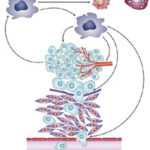| Understanding Cell Matrix Interactions From Fundamental Thermodynamics to Applications in Tumor Metastasis |
|---|
 Registration: Open to all. Date: August 5, 2008 Time: 11:00 am Venue: Institute of Biochemistry and Biotechnology, University of the Punjab, Quaid-e-Azam Campus, Lahore Abstract: Cells reside and operate in a complex and dynamic extra-cellular matrix. The mechanical, structural and chemical properties of the matrix regulate a variety of cellular functions including signaling, adhesion, migration as well as invasion and metastasis in tumor systems. Unfortunately cell-matrix interactions have traditionally been studied in the context of artificial 2D environments, which are far from in vivo conditions. As a result, our understanding of the complex interactions at the cell-matrix interface has been quite limited. In particular, the mechano-chemical effects of the matrix, the proteolytic pathways and surface receptor dynamics on a 3D surface that are critical in invasion and tumor metastasis, and can not be fully studied in a 2D environment. In order to overcome the limited powers of observation in 2D, we utilize a combination of high resolution and high throughput confocal microscopy, bulk and micro-rheological measurements and multi-scale simulations rooted in statistical and continuum mechanics. Using an interdisciplinary approach allows us to understand and quantify the mechanical and chemical roles of the matrix in regulating signaling, adhesion and motility. Our results demonstrate that both cell structure and cell function are strikingly different in 3D than in 2D and that cellular response to minor mechanical changes in its extra-cellular environment is amplified in 3D than in 2D environments. Our experimental results are complemented by multi-scale simulations, that probe the physical foundations of cell-matrix interactions from the nano to the macro level. Our hybrid approach, combining high-resolution experimental and computational techniques demonstrates how a balance of cellular parameters (e.g. integrin expression and MMP activity) co-operate with matrix properties (e.g. composition, stiffness and porosity) to regulate adhesion, invasion and motility of tumor cells in native like environments.
Resource Persons:
Speaker Dr. Muhammad Hamid Zaman The University of Texas at Austin, USA Announcement Poster: Event Poster |
Nanowires Grown by Beam Epitaxy »

